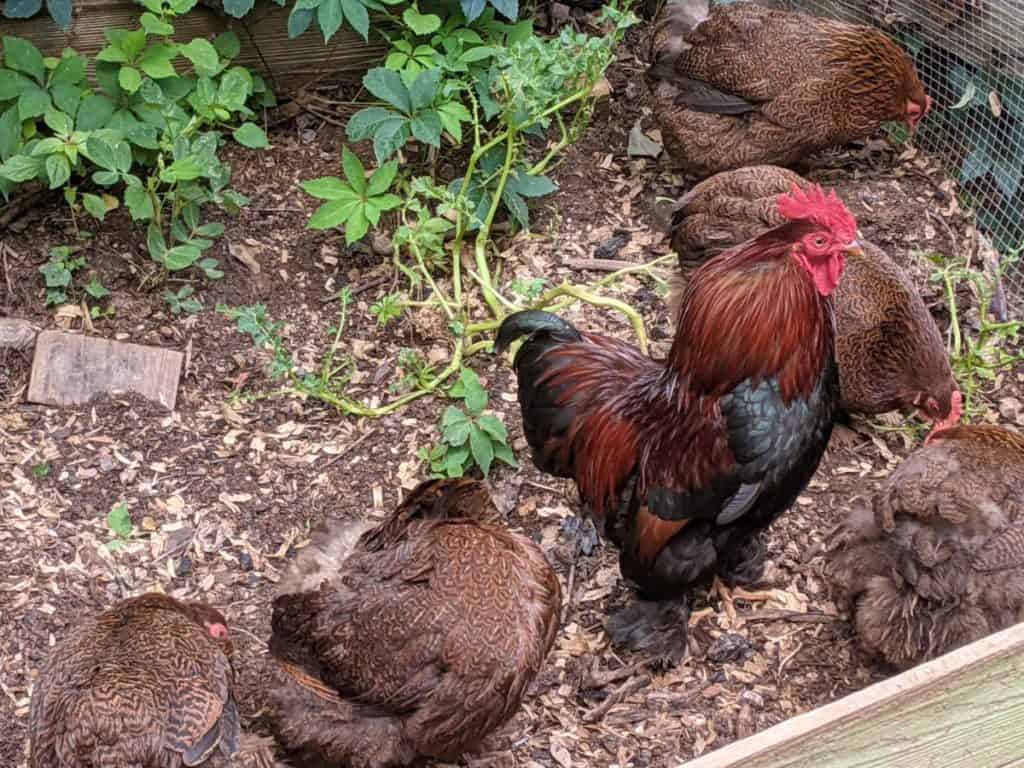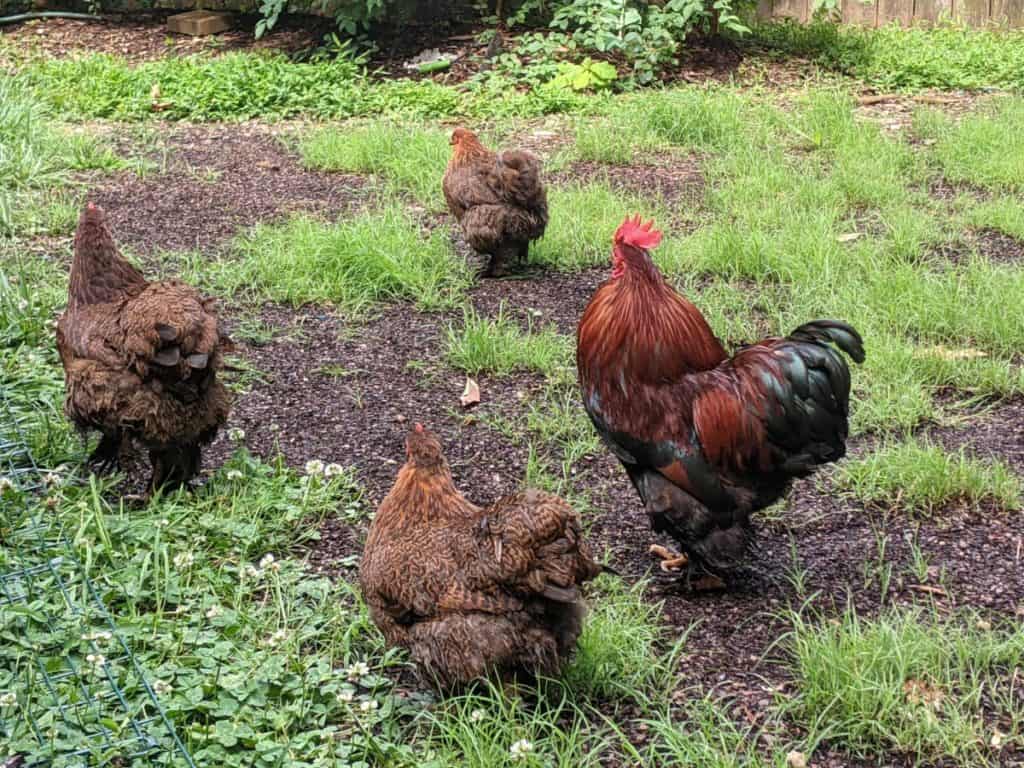Chickens are such an integral part of human society that it is hard to think of a time when they were not domesticated animals, living with humans to provide eggs and meat. Most chicken breeds have been dependent on humans for food and protection for so long; could they survive in the wild?
Wild chickens, also known as red jungle fowl, can and do survive in the wild. However, they seem to favor areas that have been disturbed by humans, such as secondary forests. Domestic chickens that are not kept as pets can survive in the wild, depending on how healthy they are and what the wild looks like.
Where do chickens come from? Are there still wild chickens out there? Could a domestic chicken survive in the wild without humans? These are just a few of the questions that we answer in the below article.
Where Do Chickens Come From?
The domestic chickens that we know have the scientific name of Gallus gallus domesticus, and, as the name indicates, these chickens have always been domesticated.
However, they were derived from a wild bird known as the Gallus gallus or red jungle fowl. Red jungle fowls originated in South East Asia, so you could say that this is where today’s chickens come from.
How Long Have Chickens Been Domesticated?
According to anthropologists, there is evidence of chickens living among humans as early as the sixth millennium B.C.
However, chickens were only used symbolically and for cockfighting in these early years. Ancient Romans used to have two cocks fight before a battle as an indication of possible victory or defeat.
The first sign of exploiting chickens as a food source was detailed in a paper by Lee Perry-Gal et al. in 2015. Archeologists discovered a whole mass of chicken bones at a site called Maresha in Israel. Not only did most of these bones belong to female chickens (ruling out cockfighting), but there were clear signs of butchering on the bones.
The bones date back to the Hellenistic period, between the fourth and second centuries B.C. This is the earliest evidence of chickens being used as a domestic source of food.
Are There Any Wild Chickens Left?
As mentioned previously, the breeds of chickens we know have always been domesticated. However, you could consider their ancestor, the red jungle fowl, to be a naturally wild chicken, and these birds are very much still alive and surviving in the wild.
If you look at a picture of red jungle fowl, you can clearly see the resemblance to domestic chickens. So, this may cause some confusion and lead people to assume that they are wild, domesticated chickens, as paradoxical as that term is.
You can, however, distinguish the red jungle fowl by the white ear-shaped patches on either side of its face and its grey feet.
Where Do Wild Chickens Live?
Red jungle fowl are found in the forested areas of Southeast Asia. Interestingly, it seems possible that these birds actually prefer disturbed forests, i.e., those that humans have impacted. These include secondary forests that have been planted and grown after harvesting the initial forest for timber.
What Do Wild Chickens Eat?
Wild chickens are insectivores and herbivores, so they will eat any form of wild crop, grass, seeds, worms, grubs, beetles, ticks, etc.
How Long Do Wild Chickens Live?
The lifespan of a red jungle fowl is twelve to fourteen years. Of course, in the wild, there is less protection from predators, so this lifespan can be prematurely shortened.
The affinity that wild chickens have for living in areas that have been disturbed by humans may be a survival strategy.
The chickens’ natural predators would have been driven out of the forests when they were harvested or invaded due to human intervention. These animals may be more hesitant to return than the wild chickens. This would mean that there are fewer predators in these wild chicken habitats.
Can A Domestic Chicken Survive In The Wild?
Firstly, it is important to note that it is illegal in many places to release domestic chickens into the wild. However, this doesn’t mean that they cannot escape on their own.
The chances of a domestic chicken surviving in the wild depend on the level of domestication, quality of breeding, and what your definition of the wild is.

Level Of Domestication
Technically, chickens have natural instincts that lead them to peck and scratch at the ground for food and hide when they see a predator. This is what is required for survival in the wild. However, if chickens are raised to be dependent on humans, survival in the wild is less likely.
Suppose your chicken is a family pet. It stays in the backyard or is even allowed inside the house. You feed it grains, fruits, and mealworms, and its water bowl is always full. It has a nice, warm shelter to sleep in, and the family’s dog is considered a friend.
In this case, your domestic chicken is probably not going to do well in the wild.
However, suppose your chicken lives out in the fields, scavenging for grubs and ticks, eating wild seeds and grass with the occasional feed supplement. They usually end up drinking from natural water sources on your property, even though you have a few water dishes scattered around the field. There’s no hen house for it to sleep in; it either finds its way to the barn or needs to make a different plant.
In this case, your chicken is already practically living in the wild, and removing the last few fences is not going to make that much difference.
Quality Of Breeding
Chickens are often the victims of overbreeding and unhealthy selective breeding schemes in an effort to produce better egg layers or meatier poultry. While the more exotic backyard chickens are less likely to have these issues, you have to be careful when buying chickens.
Suppose a healthy and robust domesticated chicken was to escape the yard and set up home in the wild. In that case, they might do so quite successfully because their bodies are able to fight diseases, and they are capable of fleeing from predators.
If a sickly, poorly bred chicken with a weak immune system or physical deformities were to leave the relative safety of the coop, they would probably die very soon. Of course, such a specimen may die quickly in captivity as well. However, the same principle applies to those that are even mildly compromised.
What Kind Of Wild?
There is a difference between the wilds of a city and the wilds of a forest.
Suppose a domesticated chicken escapes from the owner’s yard and ends up wandering the streets of a city. In that case, it will likely not survive very long because of the lack of vegetation to eat and the presence of motor vehicles.
If a domestic chicken was to escape from a country house or even a house on the fringes of suburbia, then it has a better chance of surviving.
What Are Feral Chickens?
What about feral chickens? Feral chickens are domesticated chickens that have escaped from their homes at some point and are now living happily as wild birds, although they typically stick close to humans.
By staying near humans, they have access to food, water, and shelter, even if these things have not been provided specifically for the chickens.
A really good example of the survival and even thriving capacities of domestic chickens that turn feral are those on Kauai in Hawaii. However, it is suggested that the survival of these flocks is partly contributable to their interbreeding with wild ground birds.

Conclusion
Chickens are quite smart, and most of the time, they live by instinct, even in domestic situations. The chances of survival depend on three main factors: the level of domestication, the health status of the bird based on breeding quality, and what kind of wild environment they are escaping into.
You should also always remember that there are wild chickens called red jungle fowl that have never been domesticated, and they have survived in the wild for centuries.

